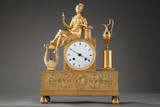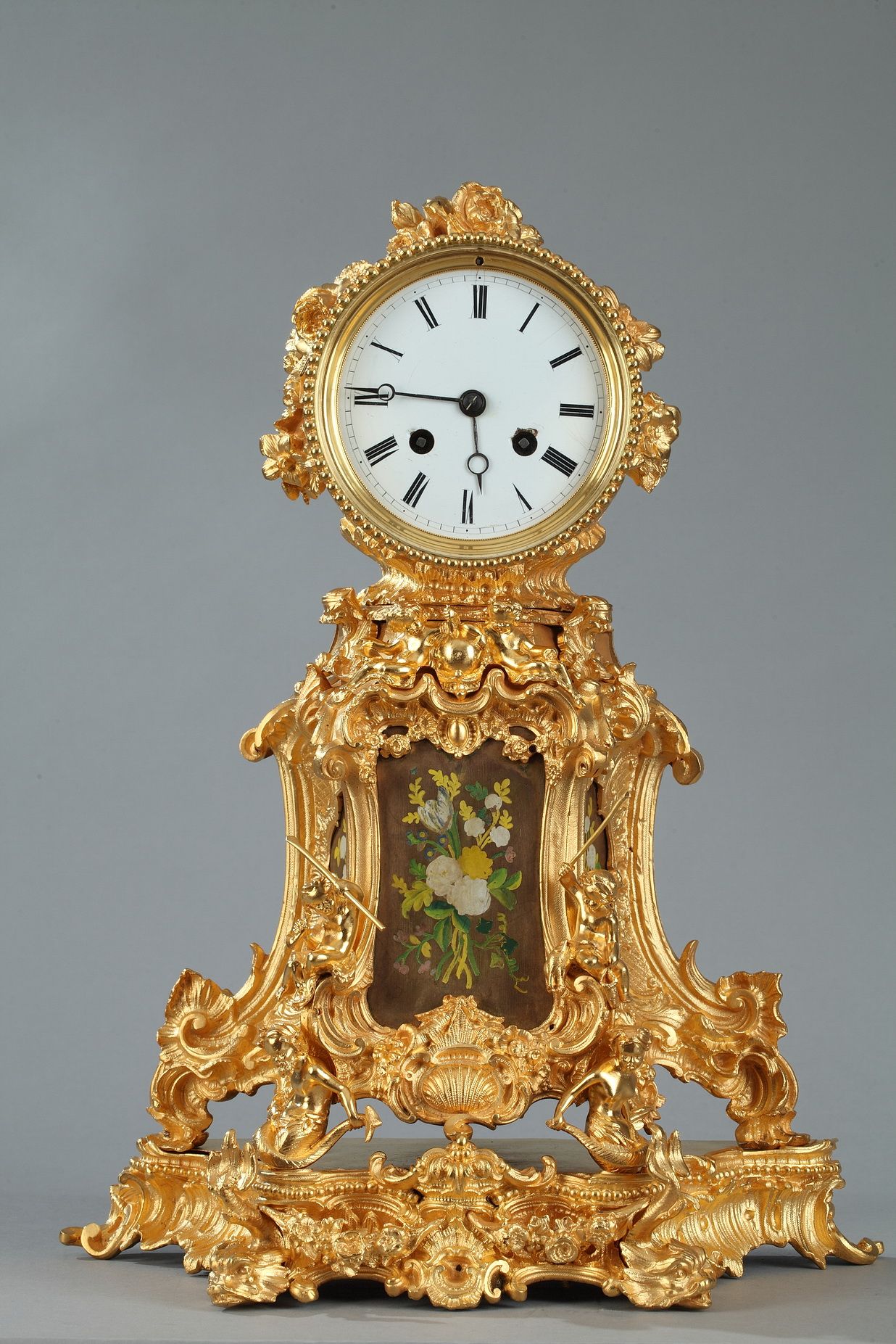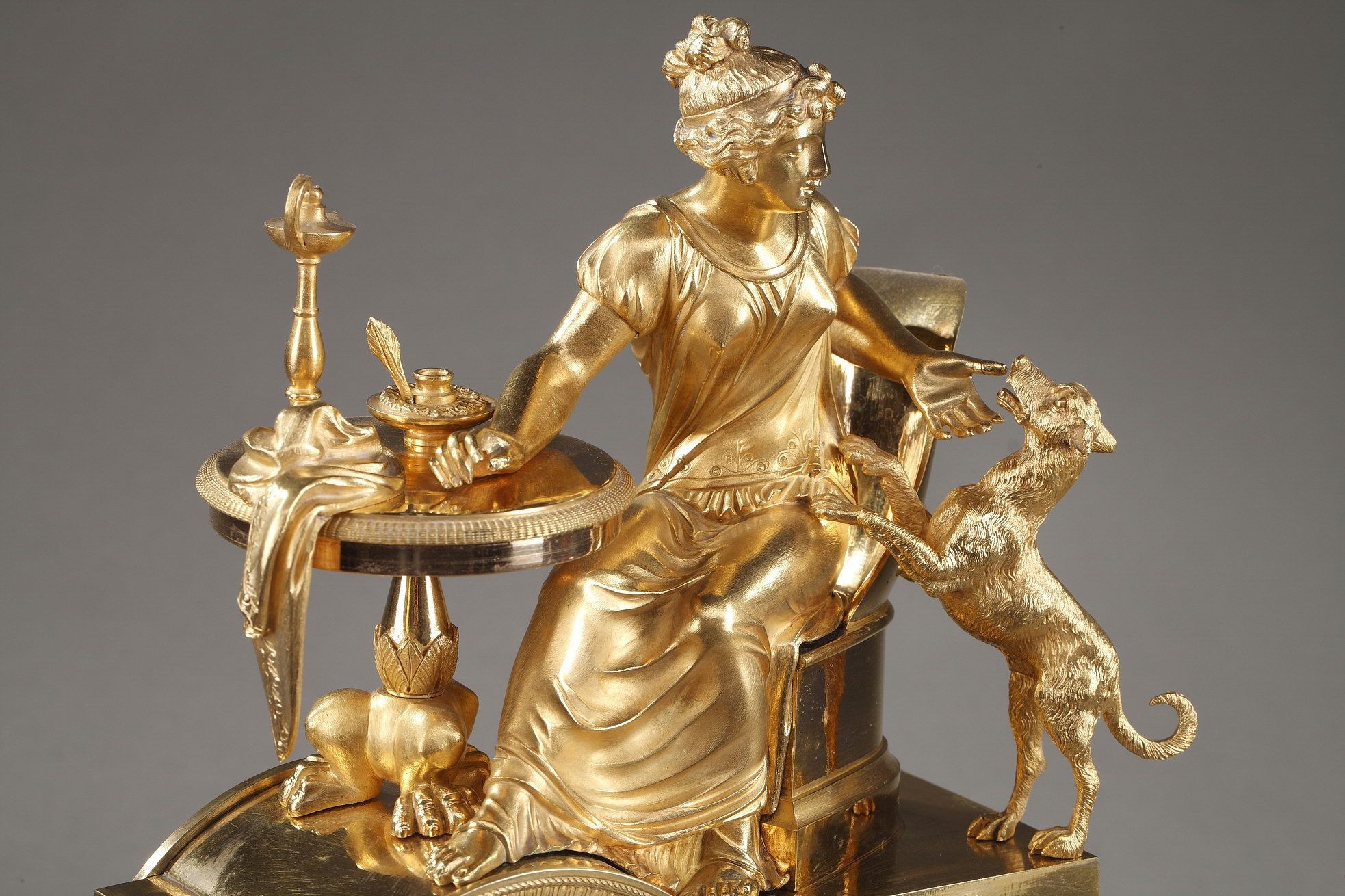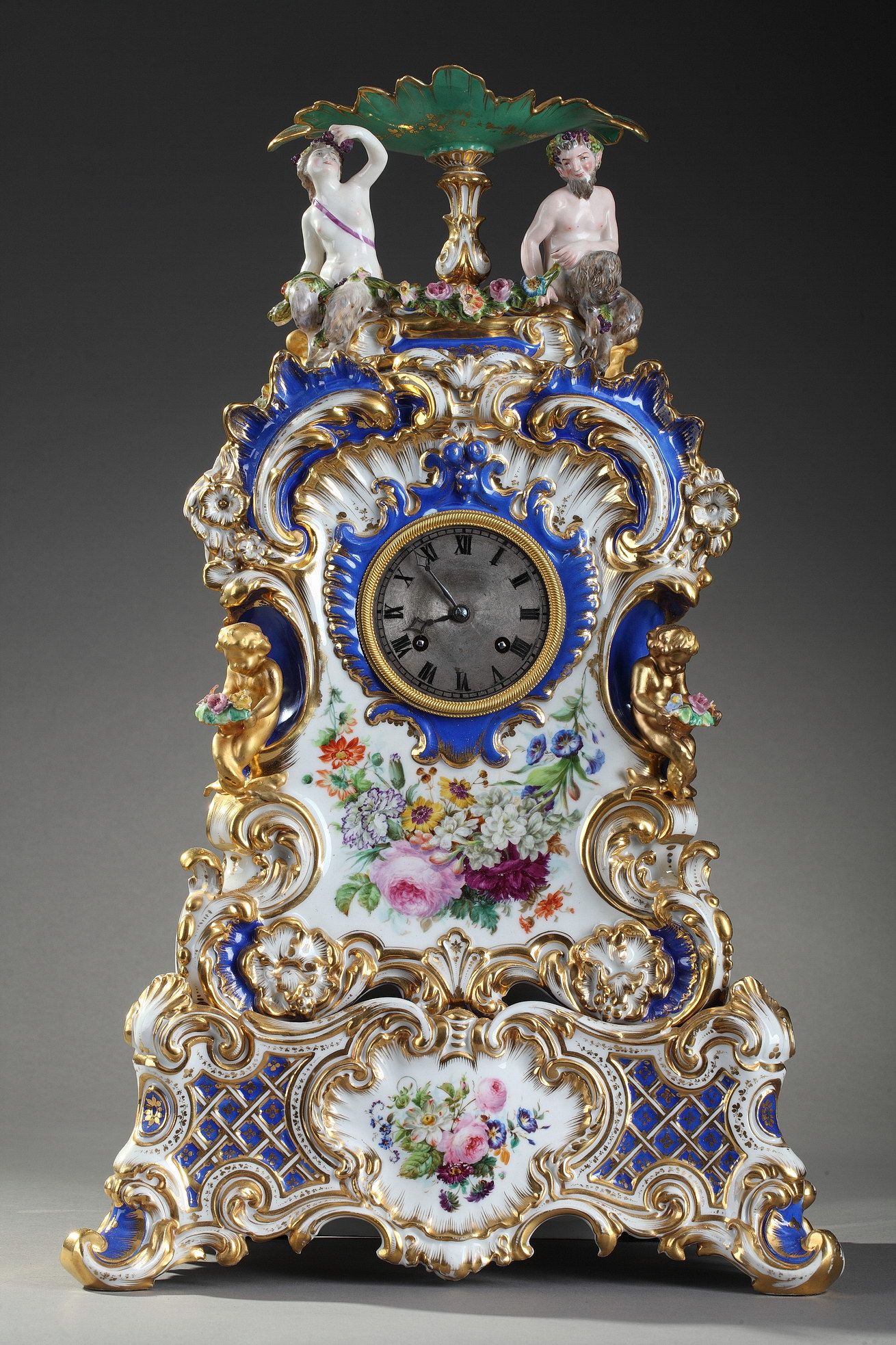From the end of the 18th century, artists began to speak out against classical rigidity and the cult of the beautiful ideal, preferring more realistic subjects that were closer to their time. This new style, which exalts emotion, sensitivity, imagination and fantasy, is also evident in Romantic clocks.
BRONZE DECORATION
Under the Restoration, bronze workers took a leading role in the art of clock-making. They translated with virtuosity anecdotal scenes, episodes of daily life, gothic architecture and exotic scenes.
The 1830s marked an evolution in the ornamental grammar of clocks. Devoid of figures, they were adorned with more or less antique motifs such as horns of plenty, friezes of palmettes, finely chased garlands framing the gilded bronze movement, or flower baskets, a characteristic motif of the Restoration period.
During the reign of Louis-Philippe, these decorative motifs became busier, more abundant and more boldly chased.
Rocaille clock decorated with floral motifs
THE VOGUE FOR SUBJECT CLOCKS
Subject clocks became very popular with a new, mainly middle-class clientele. Neo-classicism, which continued under the Empire and Restoration, provided scenes and characters drawn from mythology and ancient history.
Present on Louis XVI clocks, they were used again during the first thirty years of the 19th century. Among the most common we find Apollo and Diana the Huntress, most often copied from Greco-Roman antiquities, Orpheus, Mercury, Adonis, Chronos, accompanied by bas-reliefs copied from Greek vases, but also and above all Venus and Eros, the god of love, crowning Psyche or simply playing the harp or drumming.
However, domestic scenes arethe most common sources of inspiration. The clocks that inventories refer to as "library model" show, through the representative choice of furniture objects, the intimate atmosphere of the study. The theme of reading, very often depicted on early 19th century clocks, is often associated with History, the Arts and the Sciences.
"La fidélité" bronze clock Empire period
Around 1830, enamelled clocks became very popular. This was the period when neo-classical scenes gave way to Romantic flower designs. Executed in champlevé enamels of various colors, the flowers are arranged in varied and sometimes very elaborate compositions, as illustrated, for example, by our clock signed Jacob Petit.
Porcelain clock in the Jacob Petit style
While the Middle Ages, Henry IV and Mary Stuart were the subjects of great interest to historicists around 1820, the Far East has fascinated the Western world since the 18th century. The movement gained momentum during the reign of Louis XV, to the point of giving rise to numerous pieces of furniture and objects "in the taste of China". The vogue for the exotic continued in the first decades of the 19th century, with subjects inspired by Africa and America.
Romantic-era clocks feature a vocabulary inspired by a variety of exotic sources, such as the Black populations, the Turks and the Chinese, particularly popular with connoisseurs. These motifs testify to the period's taste for faraway lands, which never ceased to fire the imaginations of artists in search of mystery and exoticism.
Esmeralda" clock
Bibliography
-La pendule à sujet du Directoire à Louis Philippe, Saint-Omer,Musée de l'Hôtel Sandelin, June 26-September 12, 1993.
-Cardinal, Catherine, L'Horlogerie dans l'histoire, les arts et les sciences: chefs-d'œuvre du Musée international d'horlogerie de La Chaux-de-Fonds, Suisse, Lausanne, Scriptar, 1983.
-Dupuy-Baylet, Marie-France, "Les pendules des premières années du XIXe siècle et leur cortège d'objets mobiliers", L'Estampille/L'objet d'art, June 1997, pp. 76-82.
-Dupuy-Baylet, Marie-France, "Les pendules des lendemains de la Révolution", L'Estampille/L'objet d'art, May 1998, pp. 54-65.
-Kjellberg, Pierre, Encyclopédie de la pendule française du Moyen Age au XXe siècle, Paris, Editions de l'Aamateur, 1997.






